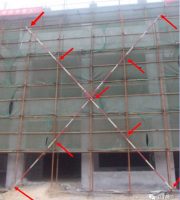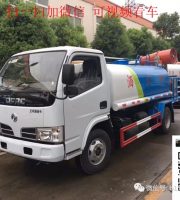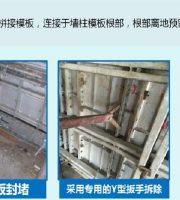According to the on-the-spot investigation on the layout characteristics of dormitory building in XX group headquarters plant area, based on the wireless network requirements and wireless network design principles, combined with the characteristics of Juwan wireless system technology and products, the construction scheme design is as follows: 1
. 
In order to meet the needs of users to build a high-speed, stable, safe, reliable and easy to manage wireless access network, the design scheme is designed according to the AP + AC structured wireless network solution
. 
The principle of network topology is as follows: 2
. 
Actual topology of wireless coverage (dormitory building) 3
. 
The actual deployment mode of wireless equipment point design needs to be based on the actual field survey and signal test, and the wireless network adopts the cellular deployment mode
.
XX headquarters dormitory building: it is tentatively deployed to cover 7800 square meters, with a large number of dormitories
.
An AP is required for every 150-300 square meters
.
It is estimated that the total number of APS is about 28: serial number, equipment type Number of devices in the area 1 wireless access point AP top of dormitory corridor 422poe switch hiding place (negotiation hiding place) 63 gateway (authentication server) machine room (negotiation hiding place) 54ac (controller) machine room (negotiation hiding place) 55 hard routing machine room 14 AP point bitmap (each dormitory) according to the coverage area requirements, The construction plan of AP point is as follows (there may be a slight deviation in the actual construction, and the specific scheme shall be subject to the site construction requirements and conditions): 5
.
Weak current construction wiring diagram (POE power supply without socket is adopted, which is safe and reliable) 6
.
The design is based on network standard: support ieee802.11n, IEEE802.11g, IEEE802.11b, ieee802.3u, ieee13802.3af; ü Transmission rate: 300m: -65dBm@10%PER ; 150M: -68dBm@10%PER ; 108M: -70dBm@10%PER ; 54M: -72dBm@10%PER11M : -85dBm@8%PER ; 6M: -88dBm@10%PER ; 1M: -90dBm@8%PER ; ü Media access protocols: CSMA / Ca, TCP / IP, IPX / SPX, NetBEUI, DHCP, ndis3, ndis4, ndis5l ü Modulation: DBPSK, DQPSK, CCK, OFDM, 16-QAM, 64-qam7; The success rate of WiFi access in 99% of the areas covered by WiFi is more than 95%; The number of concurrent users of single AP shall not be less than 30 persons / set; The outlet power of the antenna port should be controlled at 10-15dbm, and the maximum power should not exceed 15dBm (this index is required when there is an indoor distribution system)
.
The output RF power of the AP equipment should be less than 20dbm; 8
.
Equipment selection: AP adopts indoor installation equipment and built-in antenna, and does not build a distribution system
.
The RF output power of the equipment is 100MW, and Poe is used for power supply; All AP access wired convergence to the switch; 9
.
The number of concurrent users supported by the system in this WiFi project: (1) the number of AP in the coverage area network: 3 AP in each dormitory( 2) The optimal number of concurrent access users per AP is about 30; Single AP can associate 64 users
.
10
.
Channel planning According to 802.11BGN protocol, the bandwidth of WiFi working band is 83.5mhz, which is divided into 14 sub channels, and each sub channel has a bandwidth of 22mhz
.
The sub channel allocation is shown in the figure below: As shown in the figure, in the case of multiple channels working at the same time, in order to ensure that the channels do not interfere with each other, two channels are required The center frequency interval of the channel cannot be less than 25MHz。 In a coverage area, direct sequence spread spectrum technology can provide up to three non overlapping channels at the same time
.
Therefore, the frequency allocation principle is as follows: in principle, three non overlapping frequency points (such as 1, 6, 11) in the same frequency point group are used for frequency point planning; AP of adjacent coverage area does not use the same frequency point; The same frequency points are separated by a long distance or building partition to increase the isolation degree of the same frequency and avoid the interference of the same frequency; In the area with extremely high capacity, compact multiplexing of frequency points 1, 3, 6, 8, 11 and 13 can be used to improve the carrying capacity in the area
.
The coverage area of each AP and the simulation effect must be provided in detail, indicating that the distribution and planning to avoid interference have been adopted
.
11
.
Equipment installation requirements 11.1 specific installation requirements of gateway, switch and AC (1) it must be installed in the WiFi equipment cabinet (machine room) of the building in accordance with the design requirements and away from strong electricity, strong magnetism and corrosive substances( 2) Flammable materials shall not be stacked around the chassis (or machine room), and the temperature and humidity shall meet the normal working requirements of the equipment( 3) Directly from the cabinet (machine room) For AC power supply, the power cord should be kept at a certain distance from the data cable, and should not be crossed or mixed( 4) The switch shall be installed in the container rack or in the iron box and hung on the wall
.
The rack shall be firmly installed on the ground or hung on the wall( 5) When the jumper connected with each equipment is not connected, it should be wrapped with adhesive tape first and pay attention to moisture-proof( 6) The label of each lead-in cable shall be firm and clear, and shall not be confused( 7) Equipment, chassis (rack) and machine room cables should be wiped clean( 8) Keep the equipment clean and tidy( 9) All optical fiber transceivers and Poe power supply switches of this project are installed at appropriate positions
.
eleven point two Installation requirements of AP equipment ( 1) The AP with built-in antenna shall be installed under the ceiling or on the wall of the room or corridor in strict accordance with the position required by the design documents( 2) The AP should be well fixed, and the installation orientation should conform to the requirements Meet the polarization mode requirements of the built-in antenna, and meet the coverage requirements of the design documents( 3) When AP is installed, it should be neat and beautiful without damaging the overall indoor environment( 4) The power supply of AP is obtained by Poe through twisted pair cable, and it can also be connected to AC 220 V power supply nearby through special transformer
.
The distance between power line and data cable shall not be less than 130 mm( 5) The cable leading into AP shall be well connected with AP, and shall not be loose
.
The joint shall be wrapped and protected with waterproof tape, and shall be moisture-proof and dust-proof( 6) After the AP is installed, wipe it with a cloth to ensure the cleanness of AP
.
eleven point three Installation requirements of twisted pair network cable (1) twisted pair laid in WiFi system is mainly laid in the vertical shaft and ceiling of buildings( 2) The cable inlet shall be protected by PVC hose and treated with waterproof treatment
.
No more than 6 wires shall be threaded in each pipe( 3) The layout shall be straight and beautiful, and shall not be twisted or circled, and shall not be squeezed or damaged by external force; 1-3m redundancy shall be ensured at both ends during laying to facilitate wiring operation( 4) When bending arrangement is required, the bending angle shall be smooth and beautiful, and the bending radius shall be no less than 8-10 times of the outer diameter of the cable( 5) Each dormitory in the factory needs to install two optical fiber interfaces
.
They are located on the second floor and the fourth floor of each building( 6) Cross floor twisted pair network cable according to the relevant requirements of Meijia company to go outside the dormitory wall( 7) The selected twisted pair are water discharge, electrostatic discharge, insulation and refractory materials
.
12
.
Construction precautions (1) during the construction period, the life and rest of employees shall not be affected, and the relevant safety management regulations of Meijia group must be observed.
.



